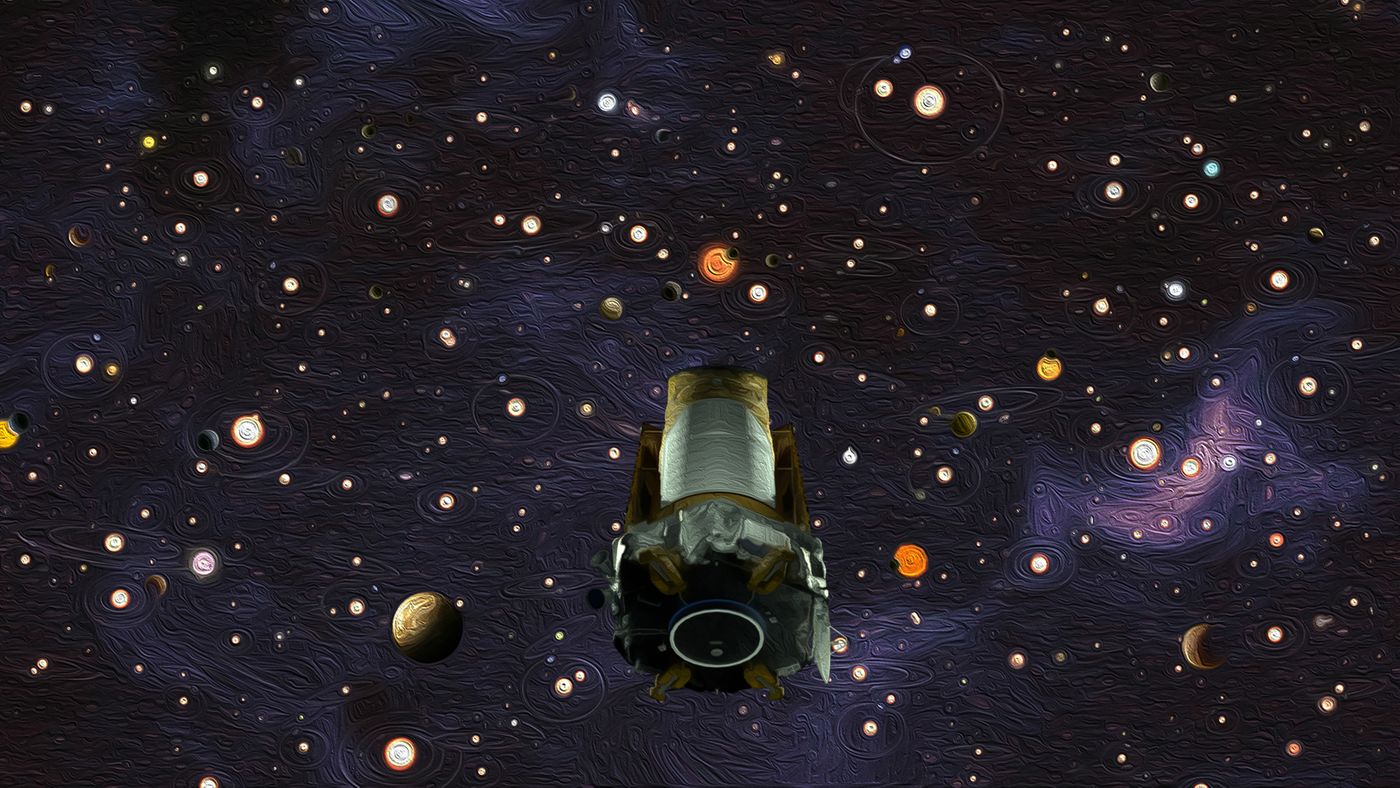NASA's Kepler Telescope Makes New Discovery Long After Retirement
In a new study submitted to the Monthly Notices of the Royal Astronomical Society and made available as a preprint on arVix.org, a team of astronomers detected an exoplanet using the microlensing technique, the first time a planet has been discovered this way using a space telescope. The microlensing technique is the only currently known method capable of discovering planets at extreme distances from Earth. This effect was predicted by Einstein’s General Theory of Relativity and occurs when the host star of an exoplanet temporarily bends and magnifies light from a background star as it passes by the line of sight of the observer. If there is perfect alignment between the foreground planetary system and a background star, there is a dramatic increase in brightness of that background lensing star. The chance of a background star being affected by a planet in this way would be about “ten to hundreds of millions to one against” according to the team of astronomers at the Jodrell Bank Centre for Astrophysics.
The team used archival data from NASA’s Kepler Space Telescope, which after finding 2,700 confirmed planets, ceased operations in 2018. The team scanned data obtained by the telescope in 2016, when Kepler was regularly monitoring millions of stars close to the galactic center, making such a discovery much more plausible. The researchers developed a new algorithm to extensively mine the archival data for microlensing signals, which resulted in five candidate signals, and one clear indication of an anomaly consistent with the presence of an orbiting exoplanet.
In the study, the team also made use of data from five ground-based surveys, which were monitoring the same area of the sky at the same time as Kepler. Combining this data with the data obtained by Kepler, the team was able to confirm that the signal was conclusively from an exoplanet. The exoplanet that was discovered is nearly twice as distant as any exoplanet previously seen by Kepler. The exoplanet, K2-2016-BLG-006Lb, is almost identical to Jupiter in terms of mass and distance from its host star, but is at a whopping 17,000 light years from Earth!
NASA’s Kepler Space Telescope was not designed to find planets using the microlensing method, but was optimized to detect planets using the transit method – a method in which the light from a star is monitored for periodic dips in brightness, which signal that an exoplanet is passing in front of the star and blocking some of the light relative to the observer. In the near future, NASA will launch the Nancy Grace Roman Telescope and ESA will launch the Euclid mission, which will be optimized to find planets using the microlensing method. These telescopes will be extremely powerful and will potentially find thousands of distant planets that have yet to be discovered by other methods.
Sources: The University of Manchester









